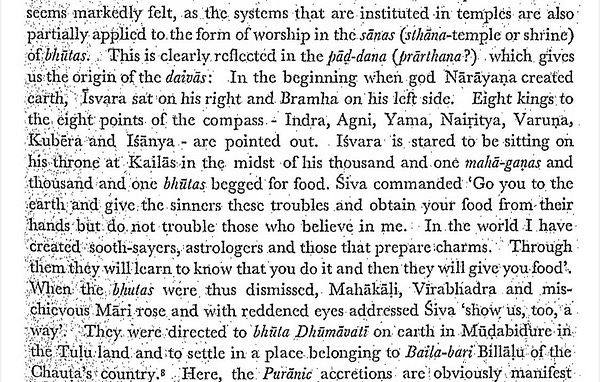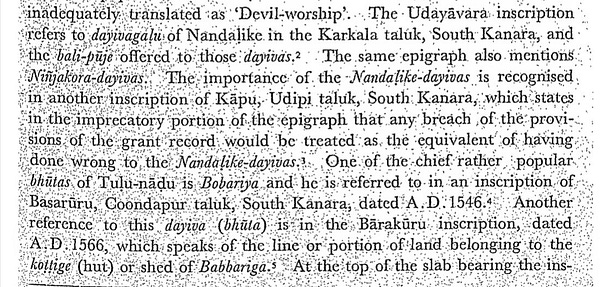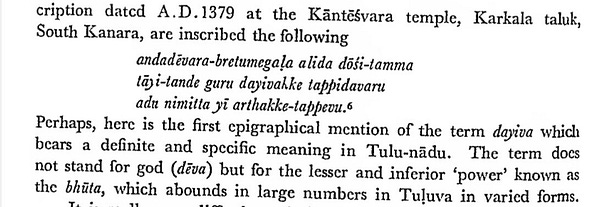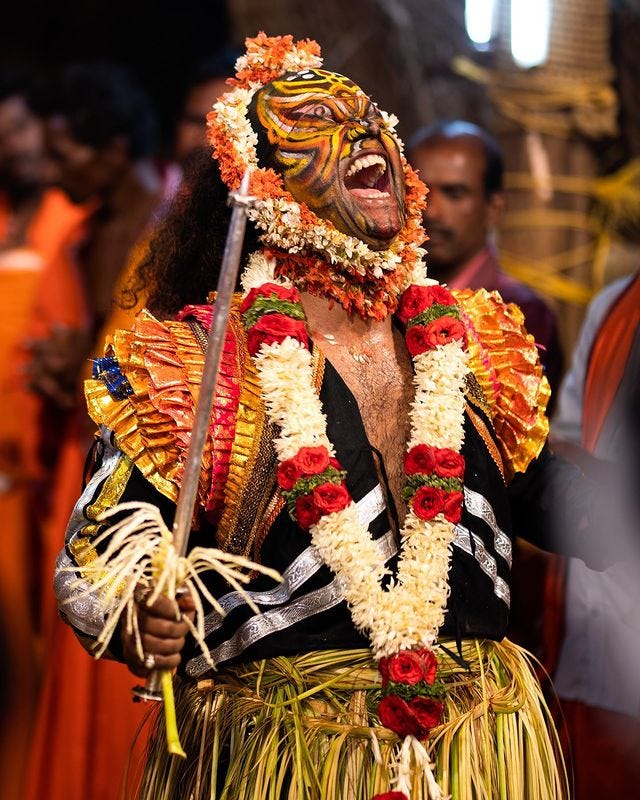Welcome to Eternal Path! This week we feature a deep dive on Bhootha Kola and an Aesthetic!
Festival Highlight: Bhootha Kola
The breakout Kannada-language film Kantara introduced millions of Indians and others to the tradition of Bhootha Kola (loosely meaning “spirit play” in Tulu) among Tulu Hindus in Karnataka.
It is an annual ritual where bhoothas and daivas (meaning “spirits” or “ancestors” - these differ slightly from their meanings in Sanskrit) are worshipped. For most readers, these terms in the context of bhootha kolaare can be taken as roughly equivalent (as always we recommend connecting with actual Hindu experts in the tradition to learn further). Murtis representing bhoothas are taken out in processions, which are accompanied by the beating of drums and the lighting of firecrackers. It is a tradition that has been attested to in writing for nearly 700 years!




During the same festival, participants sing paddanas (Tulu folk songs sung during specific functions) which praise the benevolent characteristics and actions of the bhoothas. Here, each bhootha, has a participant acting as the bhootha, and the person often becomes possessed by the spirit of bhootha, dancing mirthfully to the hypnotic drums. There are hundreds of bhoothas, each with their own music, stories, dress, dance, and vibe associated with it. Below is a YouTube video from near Mangalore of Rahu Guliga daiva, considered to be the amsha (essence) of Lord Shiva, Bhairava, and Veerabhadra.
Indica Today notes that Bhootas are classified by observers to often come from one of four major category groups:
Human origin - From people who actually existed
Animal origin - Spirits of wild animals, often either those utilized in agriculture or apex predators/threats to humans
Nature origin - Relating to the 5 major forces of nature (air, water, fire, soil, space)
Puranic origin - Relating to beings found in Vedic texts
There are also multiple statuses for daivas, including Royal, Family, District, and more. Additionally, for Tulu Hindus, since 16 is an auspicious number, there are 16 katle (types of rituals) to perform for a given daiva. These may (depending on daiva) include dancing, ritual sacrifices and offerings (sometimes of alcohol, rice, or chicken), and walking on coals, among many other steps.
As for how this works in real life, the festival belongs with the bhandara (costumes, masks, get-up for the daiva) being brought to the site. The actor then takes a ritual bath, with a female member of his family singing a paddana, upon which the actor is said to be “possessed” by the daiva. The actor then dons the bhandara, and then performs the 16 katle associated with that daiva. Then the actor (still representing by and ritually possessed by the daiva) speaks in a refined register of the Tulu language, assuring prosperity and protection to the community. Additionally, historically, sometimes a given daiva would be asked to weigh in on community disputes.
Generally speaking, those who act as daivas belong to the Nalike, Parava, or Pambadha castes, who collectively are called visha-makkala (bearers of poison). While of historically low ritual status, these castes are the only ones believed to have the ability to properly be possessed by the daivas and in an administrative sense are seen as neutral castes for disputes between other castes. Hence, during the bhootha kola, notions of ritual Hindu caste status are flipped on their head; Brahmins and other dwijas or powerful landlord castes bow down to the visha-makkala and pray to the daiva using them as the conduit.
To read more on the topic, we recommend Indica Today’s piece on the topic linked here. These rituals have numerous parallels throughout other groups in the Indian subcontinent, including but certainly not limited to Ayyanaar Bhagavan worship in Tamil Nadu, and worship of Baba Mohan Rama in Punjab and other parts of the North.
